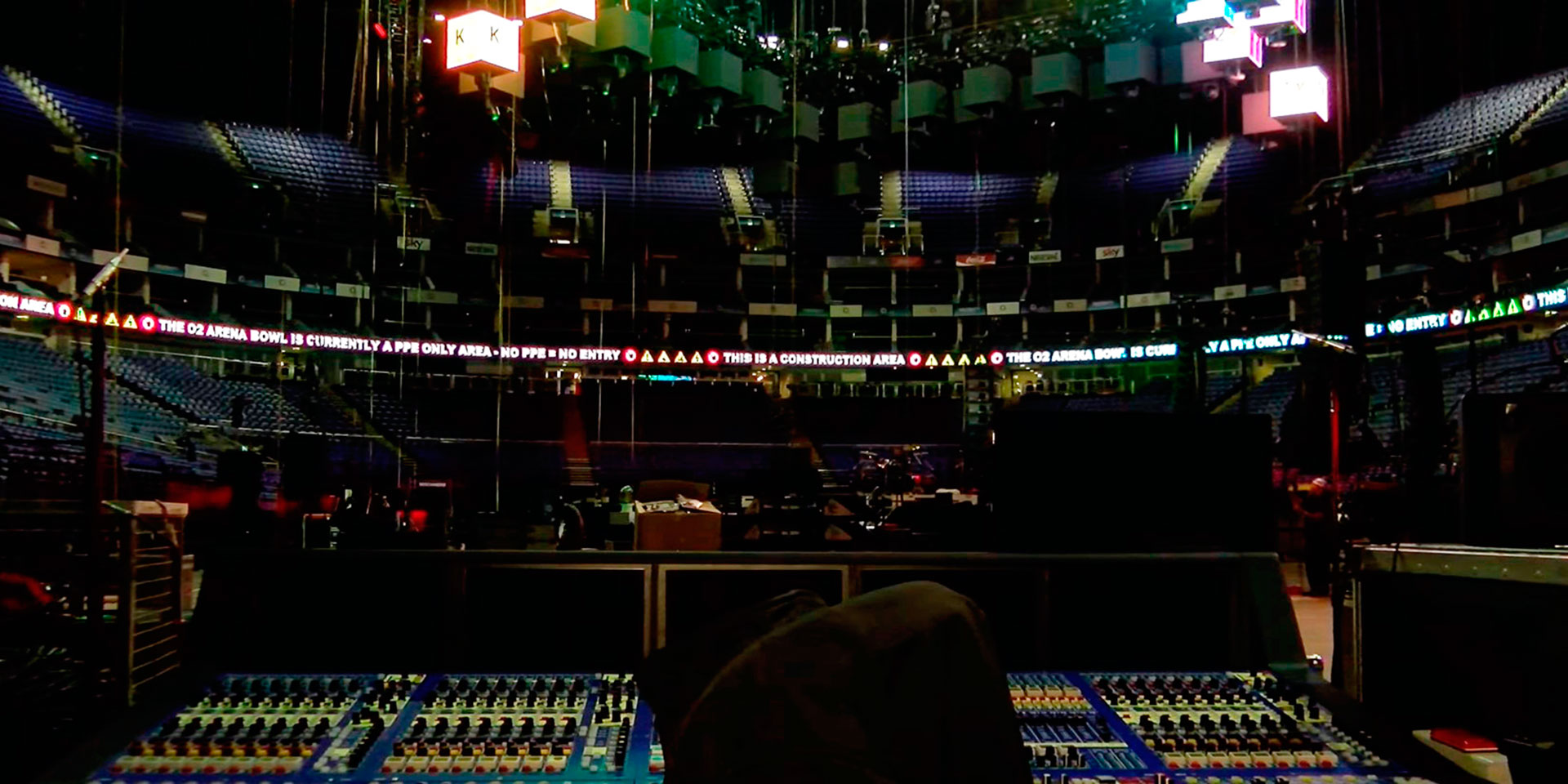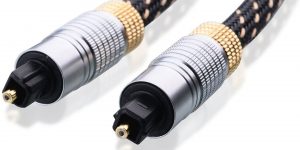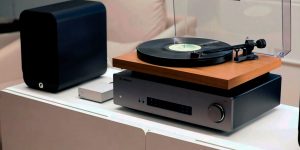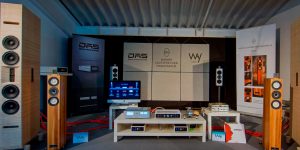Huge acoustic structures can hardly be called an innovation. They became widely known after the construction of the first “Wall of Sound”, created by the sound engineer Owsley Stanley in 1973. However, already in the early 80s, the “Walls of Sound” gradually disappeared from concert venues, giving way to more practical audio systems.
Despite the impracticality usage, niches are still found for such incredible structures. Gigantic audio structures that combine a huge number of emitters and powerful amplifying devices have colossal sound pressure.
The emergence of an idea
One of the first acoustic ones is considered to be the wall of sound of the Grateful Dead, which first launched in 1973. It was designed by Owsley Stanley.
The prerequisite for the creation of a stage audio monster was the then-popular studio recording principle with the same name “Wall of Sound”, which was invented by Phil Spector. While recording The Beatles’ album “Let It Be”, Spector applied an original recording method in which all instruments were recorded at once (instrument signals were fed through the control room to the recording room, after which they were recorded on magnetic tape).
The first “Wall of Sound” and its possibilities
One of the objective prerequisites for creating your own concert sound system and building a “wall” was the unsuccessful performance of the Grateful Dead at the Woodstock Music & Art Fair festival in the same 1969 year. Then the problems with the equipment significantly affected both the performance and the perception of the collective by the public.
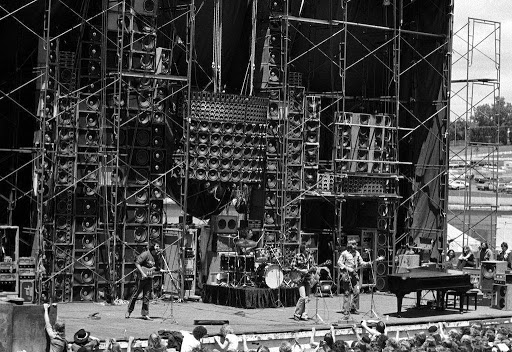
And by 1972, Osley Stanley completed the design of “The Wall of Sound”. Rick Turner, Ron Wickersham, and John Karl also contributed to the design of the structure. By 1973, the “Wall” was mounted. The RMS of the wall was 26,400 watts. The structure was able to create a sound pressure of 103 dB at a distance of 1/2 mile. The musicians performed in front of the wall and did not use monitors because the sound was one whole – the same for people, in front of the stage and for the musicians on it.
Tech Specs
Now let’s talk a little about the technical side of the wall. The entire design was based on 89 McIntosh MC-2300 transistor amplifiers (RMS each 300 W) and three McIntosh MC-3500 tube amplifiers (RMS – 350W). The speakers used were 586 JBL speakers, woofer (15″), subwoofer (12″), and microwave (5″), as well as 54 Electrovoice tweeters.
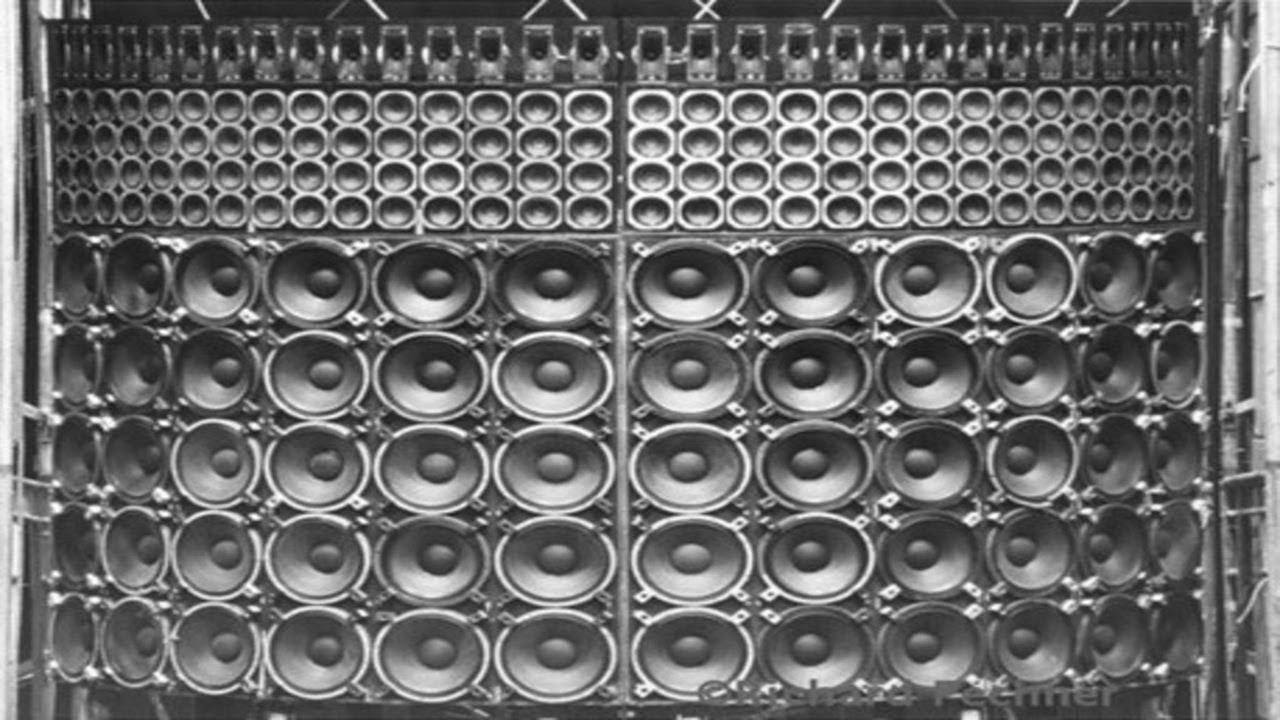
In addition, there were 11 independent sound reinforcement channels with a power of 2.4 kW each. The entire audio system actually used an active crossover circuit, since the four-way signal separation began before amplification.
The “Wall of Sound” was used by the Grateful Dead until the early 80s, when the group considered its use impractical due to the emergence of more perfect and convenient solutions.
Incredible sound for rock legends
Even after abandoning such huge structures, it was necessary to return to this decision in 1988. This happened at the Monsters of Rock festival in Derbyshire (UK), which took place from August 19th to 22nd, 1988. The festival attendees including Metallica, Van Halen, KISS, David Lee Roth, Megadeth, Guns `N` Roses, Helloween, and Iron Maiden wanted to perform really powerfully in front of a large audience (107,000 viewers).

Tech Specs
For this, an acoustic structure 150 feet (45 meters) long and 35 feet (10 meters) high was erected, which had a total RMS of 523,000 watts (operating power) and provided a sound pressure of 100 dB at 1.7 miles. Sound pressure measurements during the Iron Maiden performance showed values ranging from 118 dB to 124 dB at 295 feet (90 m) from the sound source, peaking at 140 dB.
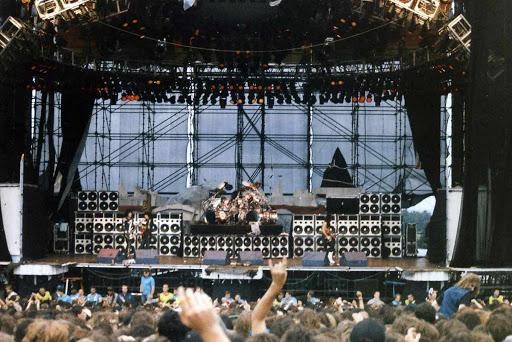
The system consisted of 300 Turbosound TMS-3 speakers and 60 Turbosound TSW-124 subwoofers. The load was 460 separate QSC and BSS amplification channels, divided into 4 bands.
DESPACIO by McIntosh and James Murphy
The DESPACIO project is a collaboration between engineers and musicians. Another sonic “colossus” was designed by James Murphy of LCD Soundsystem’s electroclash project in collaboration with sound engineer Jordan Acoustics (McIntosh distributor in the USA).
According to the authors of the project, they have developed a sound system with a total power of 55,000 watts. The system consists of 7 cabinet racks that are about 13 feet (about 4 meters) high. The total weight of the system reinforcement is 4.5 tons.
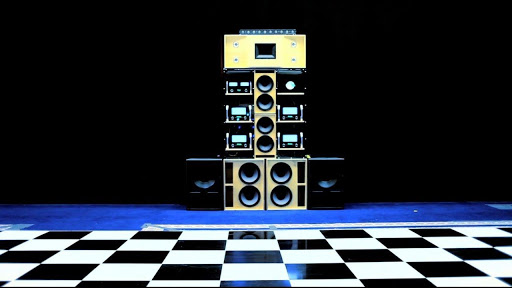
Society of Sound by Bowers & Wilkins
The system was designed based on a combination of classic bass-reflex subwoofers with three-way cabinets (Mid-bass, MF, HF) made of birch plywood.
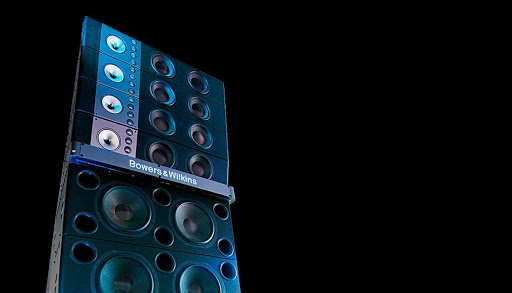
In total, the system includes 16 subwoofers and 16 satellites with a total RMS of 120 watts. For the manufacture of the sound system, speakers of 2 manufacturers were used, for the low and midrange spectrum, Rohacell speakers were used, tweeters are Bowers & Wilkins’ development and are known for their use at Bowers & Wilkins Nautilus.
Orion and Lockheed Martin
The space industry also uses colossal sonic power. Such a powerful sound wall was built at the shipyards of the aircraft company Loсkheed Martin, during the Orion tests in 2011 to create a sound pressure of more than 150 dB, which was used as a simulation of the pressure at the start of a rocket engine.

The principle of operation of the system is simple – it reproduces the sound of real rocket engines, recorded using 100 microphones, which makes it possible to recreate with high accuracy the acoustic conditions at the launch site of the cosmodrome.

